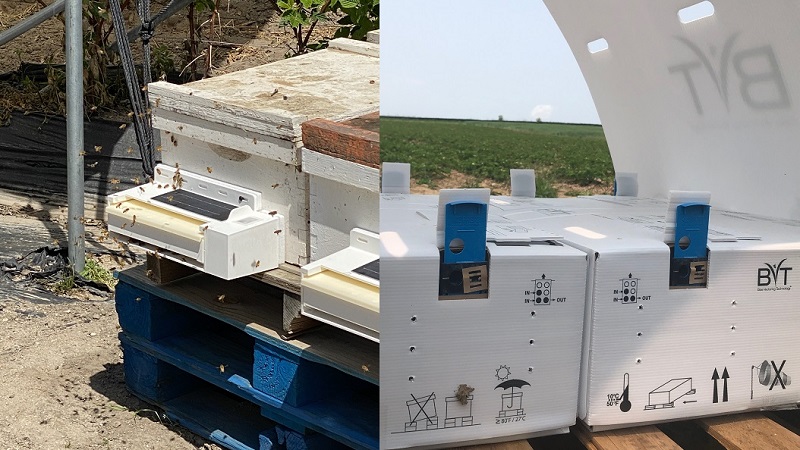New Lure Target’s Almond Enemy No. 1: Navel Orangeworm
Almond orchard experiments and laboratory tests led by USDA scientists and their colleagues are yielding good news for almond fans and bad news for almond’s No. 1 insect enemy, the navel orangeworm (NOW). Headed by USDA chemist John J. Beck, the team has developed a promising new combination of all-natural compounds to lure NOW moths into monitoring traps.
According to Beck, preliminary tests at his Albany, CA, laboratory and in two orchards in the state indicate that the experimental lure is at least seven times more powerful than the most commonly used alternative. Beck works at the Western Regional Research Center operated by the Agricultural Research Service (ARS), the chief intramural scientific research agency of USDA.
The new lure’s effectiveness is due, at least in part, to its ability to attract both male and female NOW moths. The conventional lure can’t do that.
The monitoring traps in which the new lure might someday be used are typically hung from almond tree branches. Growers and their pest control advisors use the traps to detect incoming NOW moths and to monitor their numbers, then use that information to determine the best time to apply insecticide. The new lure may provide a more accurate picture of moth numbers within an orchard.
Navel orangeworm larvae that emerge from eggs laid by female moths can damage almonds by feeding on the kernels or by contaminating them with mold-forming Aspergillus flavus or A. parasiticus fungi. The fungi are of concern because they can produce cancer-causing compounds known as aflatoxins. Almond processors spend millions of dollars annually inspecting harvested almonds to keep any nuts that contain unsafe levels of these toxins out of the food supply.
The almond studies help improve food safety and reduce food waste, two USDA top priorities. An article in the August 2014 issue of Agricultural Research magazine has more details about the research.
Source: USDA-Agricultural Research Service









